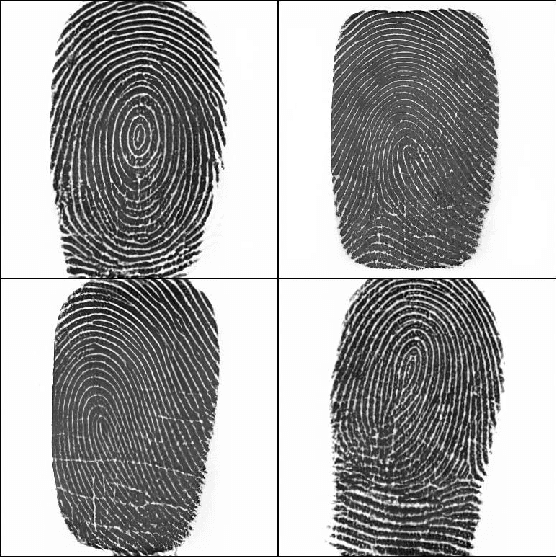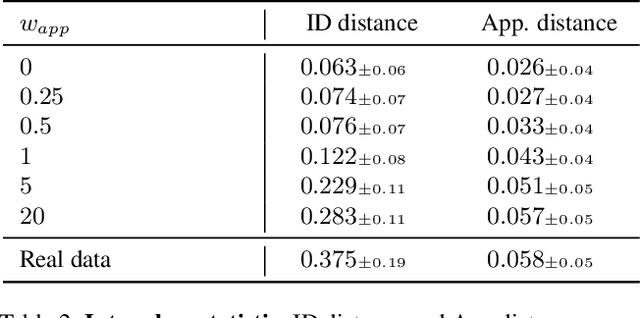Joshua Engelsma
FPGAN-Control: A Controllable Fingerprint Generator for Training with Synthetic Data
Oct 29, 2023



Abstract:Training fingerprint recognition models using synthetic data has recently gained increased attention in the biometric community as it alleviates the dependency on sensitive personal data. Existing approaches for fingerprint generation are limited in their ability to generate diverse impressions of the same finger, a key property for providing effective data for training recognition models. To address this gap, we present FPGAN-Control, an identity preserving image generation framework which enables control over the fingerprint's image appearance (e.g., fingerprint type, acquisition device, pressure level) of generated fingerprints. We introduce a novel appearance loss that encourages disentanglement between the fingerprint's identity and appearance properties. In our experiments, we used the publicly available NIST SD302 (N2N) dataset for training the FPGAN-Control model. We demonstrate the merits of FPGAN-Control, both quantitatively and qualitatively, in terms of identity preservation level, degree of appearance control, and low synthetic-to-real domain gap. Finally, training recognition models using only synthetic datasets generated by FPGAN-Control lead to recognition accuracies that are on par or even surpass models trained using real data. To the best of our knowledge, this is the first work to demonstrate this.
Matching Fingerphotos to Slap Fingerprint Images
Apr 22, 2018



Abstract:We address the problem of comparing fingerphotos, fingerprint images from a commodity smartphone camera, with the corresponding legacy slap contact-based fingerprint images. Development of robust versions of these technologies would enable the use of the billions of standard Android phones as biometric readers through a simple software download, dramatically lowering the cost and complexity of deployment relative to using a separate fingerprint reader. Two fingerphoto apps running on Android phones and an optical slap reader were utilized for fingerprint collection of 309 subjects who primarily work as construction workers, farmers, and domestic helpers. Experimental results show that a True Accept Rate (TAR) of 95.79 at a False Accept Rate (FAR) of 0.1% can be achieved in matching fingerphotos to slaps (two thumbs and two index fingers) using a COTS fingerprint matcher. By comparison, a baseline TAR of 98.55% at 0.1% FAR is achieved when matching fingerprint images from two different contact-based optical readers. We also report the usability of the two smartphone apps, in terms of failure to acquire rate and fingerprint acquisition time. Our results show that fingerphotos are promising to authenticate individuals (against a national ID database) for banking, welfare distribution, and healthcare applications in developing countries.
 Add to Chrome
Add to Chrome Add to Firefox
Add to Firefox Add to Edge
Add to Edge